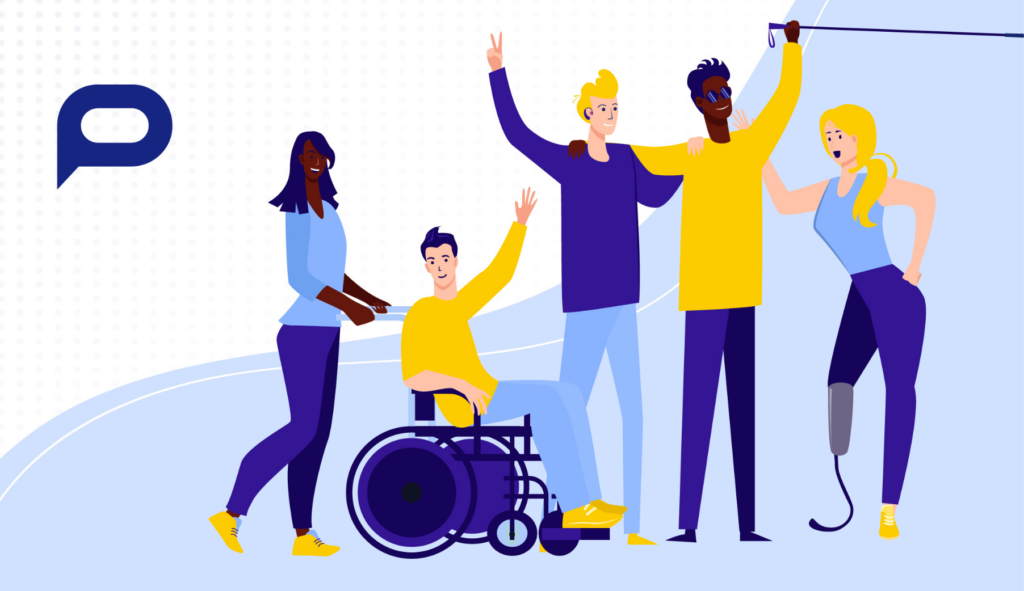Global Accessibility Awareness Day
What is Global Accessibility Awareness Day?
Global Accessibility Awareness Day (GAAD) is held each year on the third Thursday of May, and this year will take place on May 18th. GAAD serves as a day to increase awareness about digital access and inclusion for over 1 billion people worldwide with visual, hearing, motor, and cognitive disabilities. It includes reviewing websites, mobile apps, and electronic documents to ensure they are easy to navigate and understand. GAAD also serves as a day to connect with web developers on accessibility initiatives. Currently, 98% of websites have at least one accessibility failure. The most common types of failures include:
- Low contrast text
- Missing image alt text
- Empty links
- Missing form input labels
- Empty buttons
- Missing document language
By raising greater awareness of these common accessibility failures, GAAD hopes to change the digital development and design industry to make accessibility a core requirement for all digital platforms and applications.
“The power of the Web is in its universality. Access by everyone regardless of disability is an essential aspect.” – Tim Berners-Lee
What is Digital Accessibility?
Digital Accessibility is the practice of removing any barriers that could prevent users from accessing or fully utilizing a website. It primarily focuses on changing digital product design and functionality to serve all users, including those with visual, auditory, motor, or cognitive impairments.
According to The Web Content Accessibility Guidelines, all digital content should meet the following criteria: Perceivable, Operable, Understandable, and Robust.
- Perceivable refers to how information is presented on a website. For a website to meet these criteria, information should be showcased in ways that can be adapted and distinguished by a wide range of users (for example, by providing captioning, sign language, image alt text, or media alternatives).
- Operable refers to ensuring that your interface and navigation are keyboard accessible. It also requires developers to review if all users have enough time to interact with content and that content does not trigger a physical reaction (i.e., flashing lights in a gif or video).
- Understandable means creating easy-to-read content and navigation that follows a predictable pattern for ease of use.
- Robust sites offer maximum compatibility for many potential users, including those with disabilities.
History of GAAD
The idea for Global Accessibility Awareness Day began with a simple blog post by Joe Devon in 2011. Joe, a long-time entrepreneur in the Los Angeles tech industry, was inspired to write about digital accessibility after trying to help his father, who was experiencing vision loss, access resources on his computer. In his post, he notes, “For some people, an accessible Internet literally makes a world of difference.” yet, many front and backend mainstream developers aren’t knowledgeable about accessibility best practices.
Soon after posting his vision for GAAD, Joe’s post caught the attention of Jennison Asuncion, Head of Accessibility Engineering at LinkedIn. As someone who directly benefits from having more accessible opportunities, Jennison had long been involved in digital accessibility efforts. Together, they founded the first Global Accessibility Awareness Day in May 2012, spreading their movement through social media and working with other industry leaders to create digital accessibility events worldwide. Both Joe and Jennison want to open the conversation about accessibility, encourage people to ask questions and learn more about how improved digital access can be transformative.
Ways to Observe GAAD
“Accessibility allows us to tap into everyone’s potential.” ― Debra Ruh
Inclusion in design and digital development removes barriers and helps to unlock greater potential for all users. If you would like to become a digital accessibility advocate, there are numerous ways to get involved, including:
- Host an accessibility event in your area.
- Find an event to participate in either locally or virtually.
- Promote Global Accessibility Awareness Day on social media.
- Keep the conversation going by writing a blog on accessibility.
- Create and share a video about your digital experience.
- Review and overhaul your website to improve accessibility.
Conclusion
At Caption Pros, we believe in embracing the challenges that come with disabilities and are advocates for accessibility. Inclusion benefits everyone! That is why we offer various captioning services to improve communication access and make all events accessible to individuals who are deaf or experiencing hearing issues. Learn more about our award-winning captioning services.







